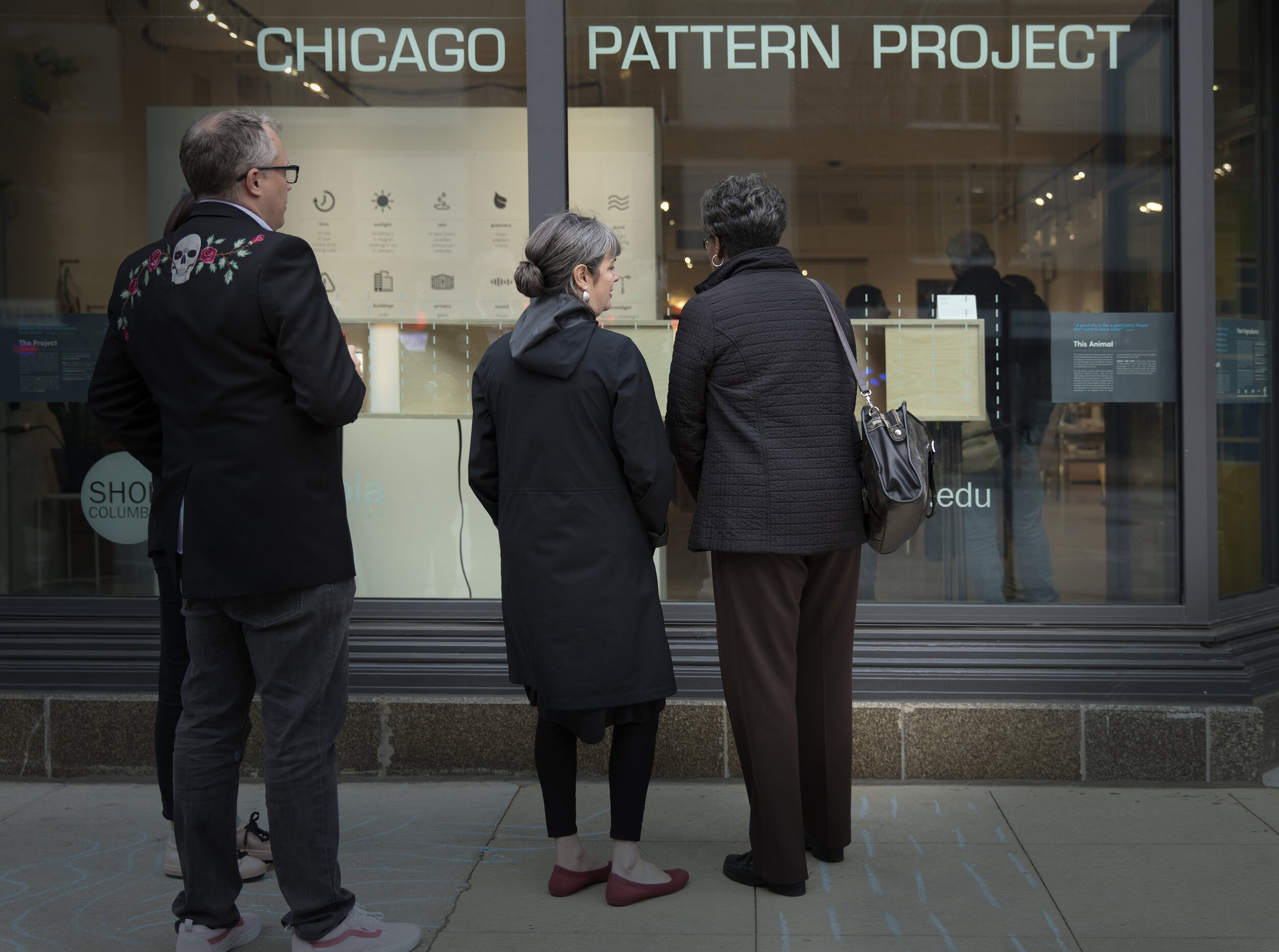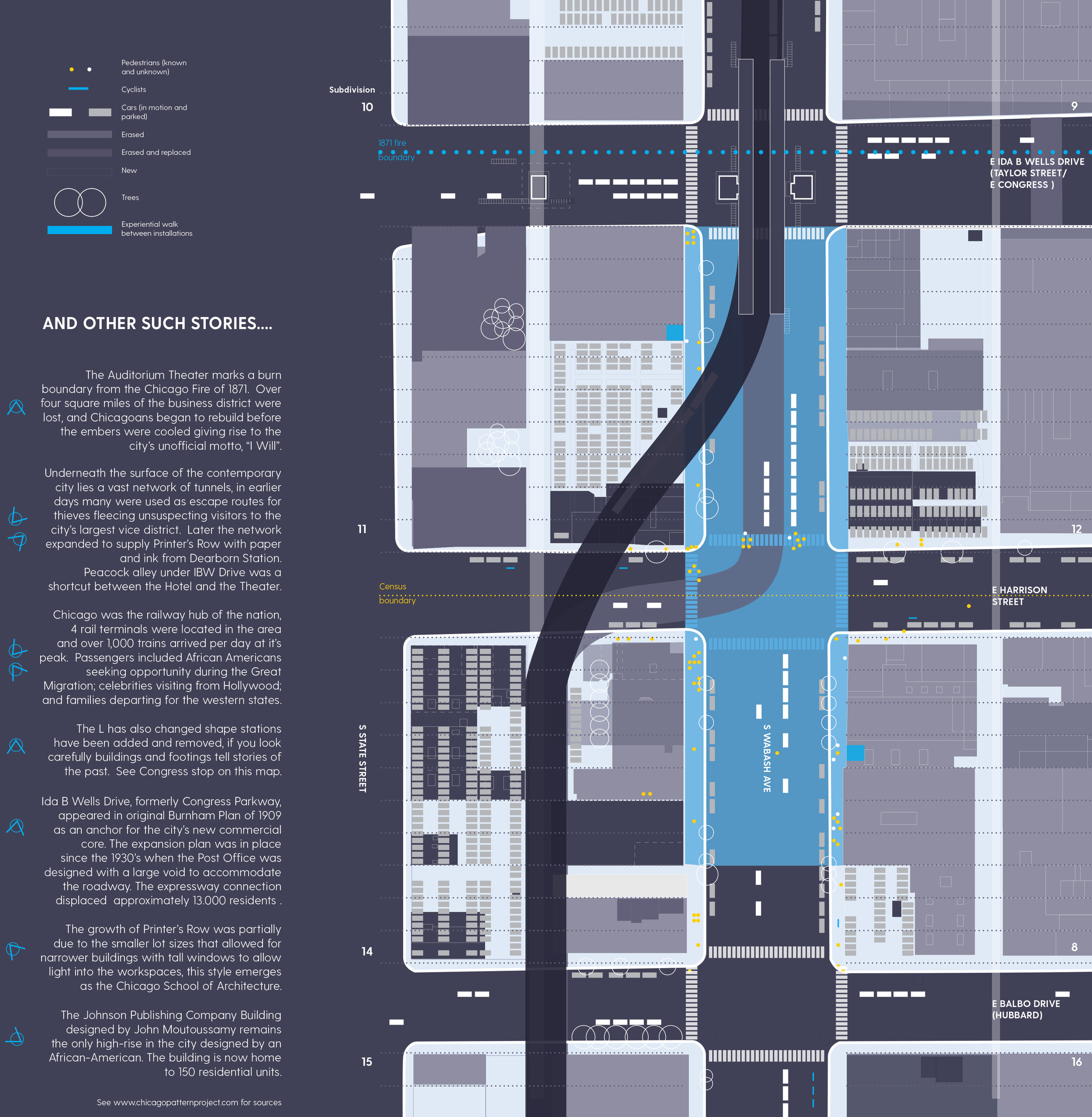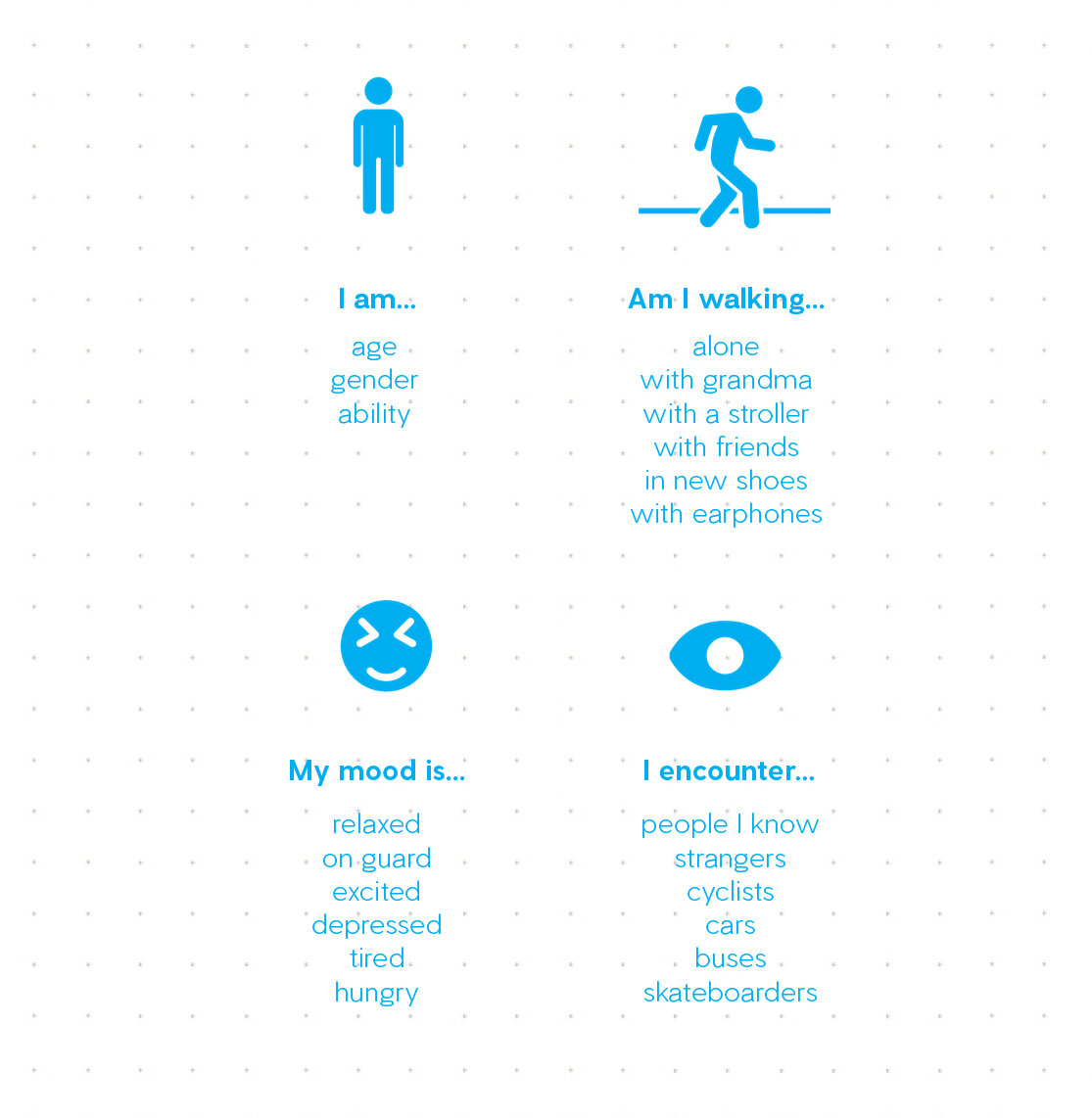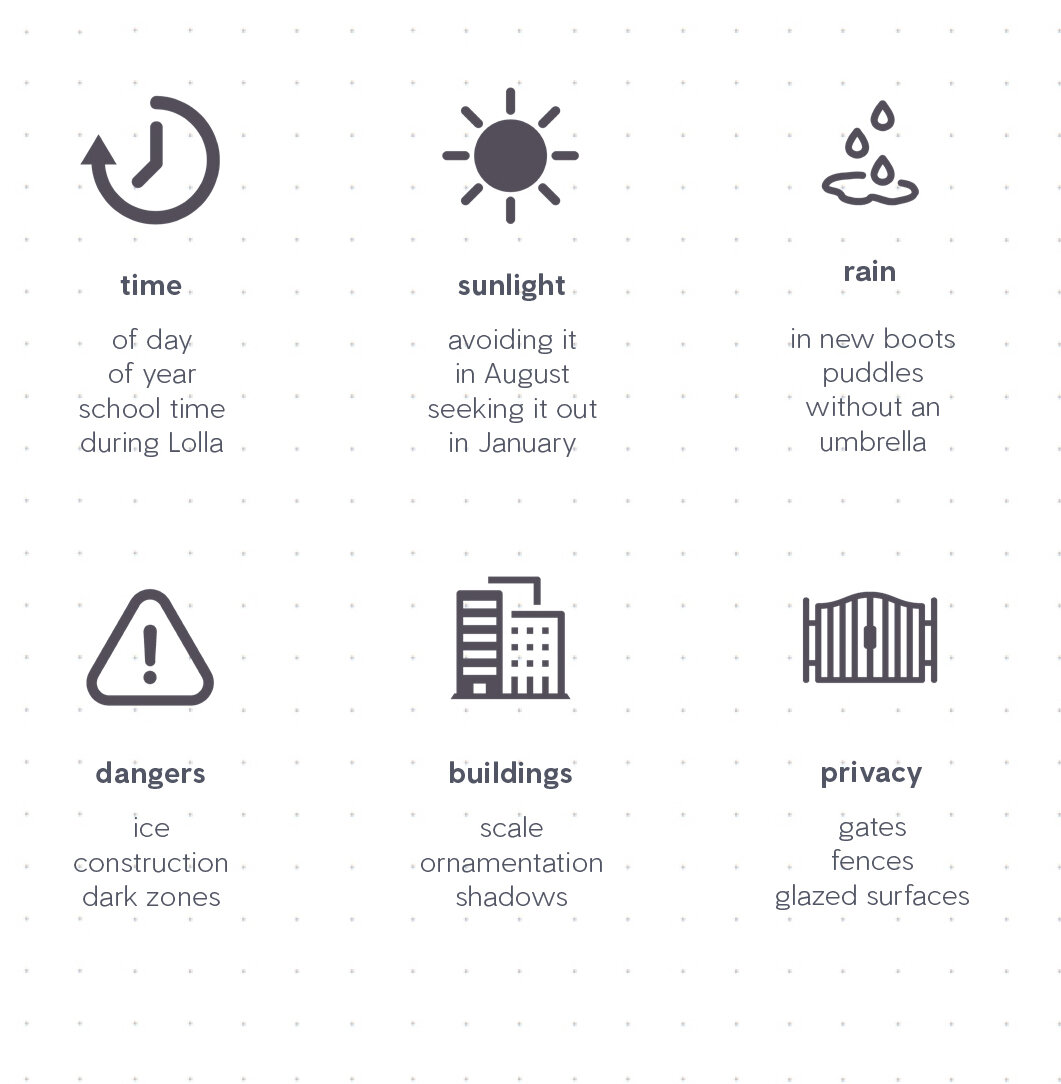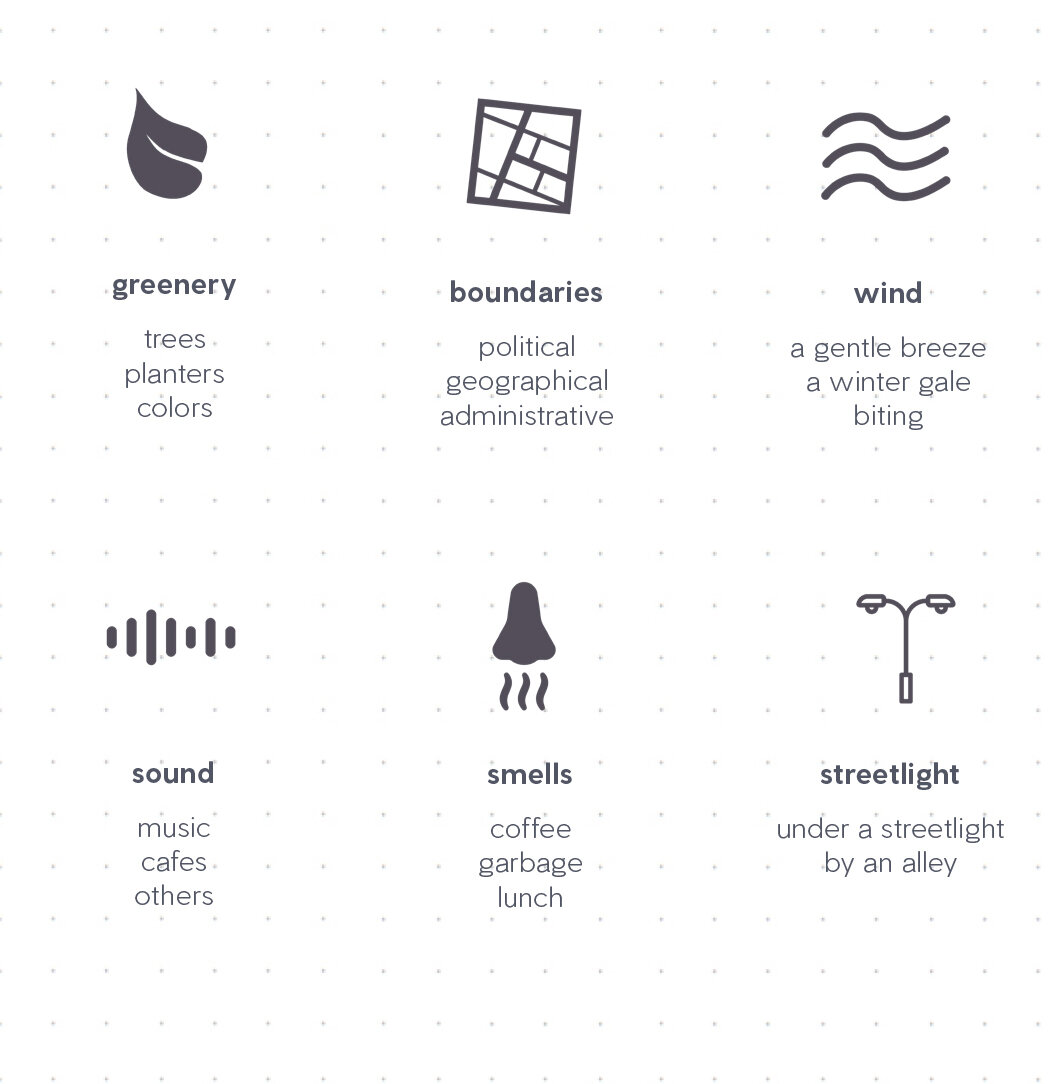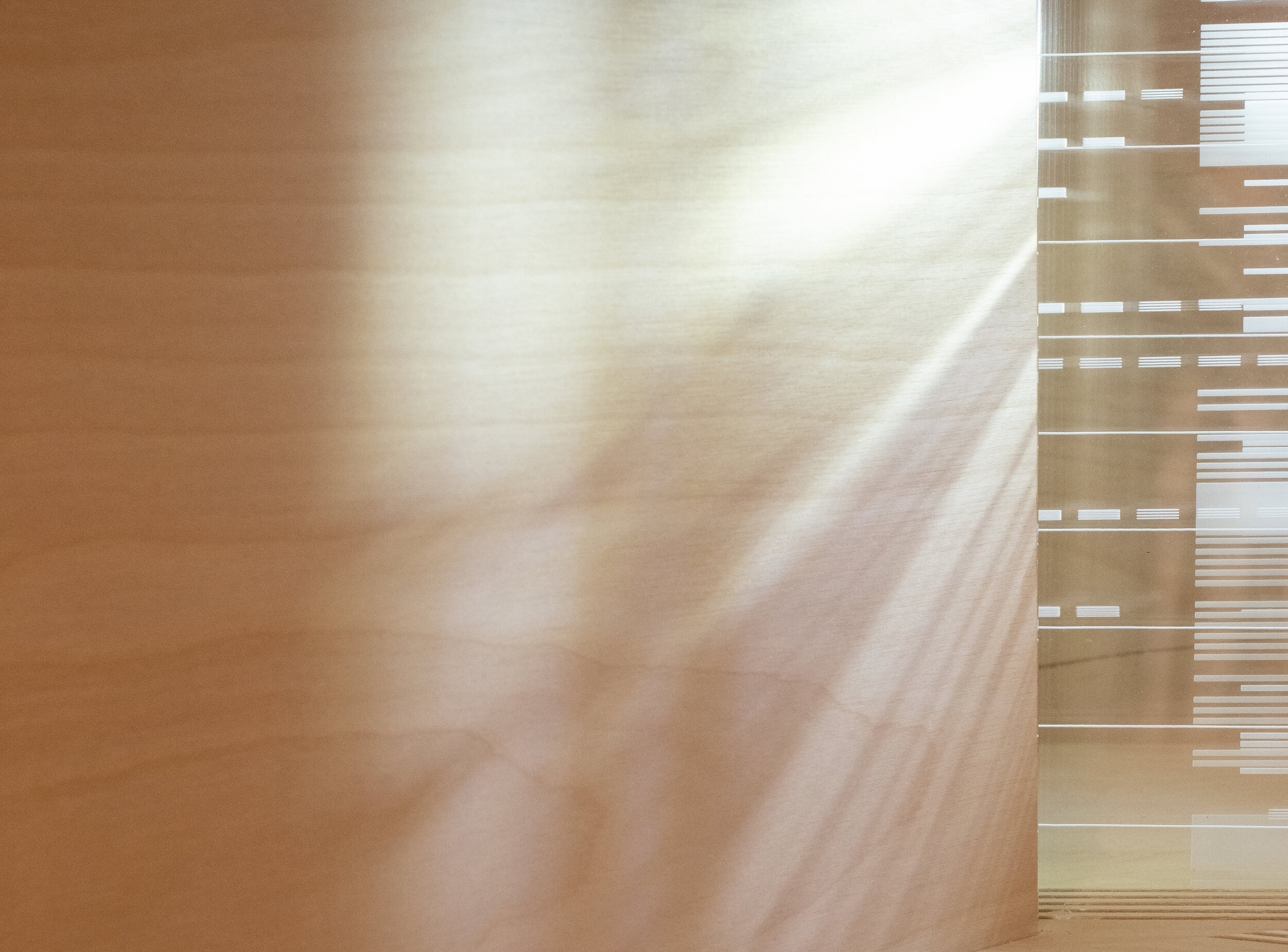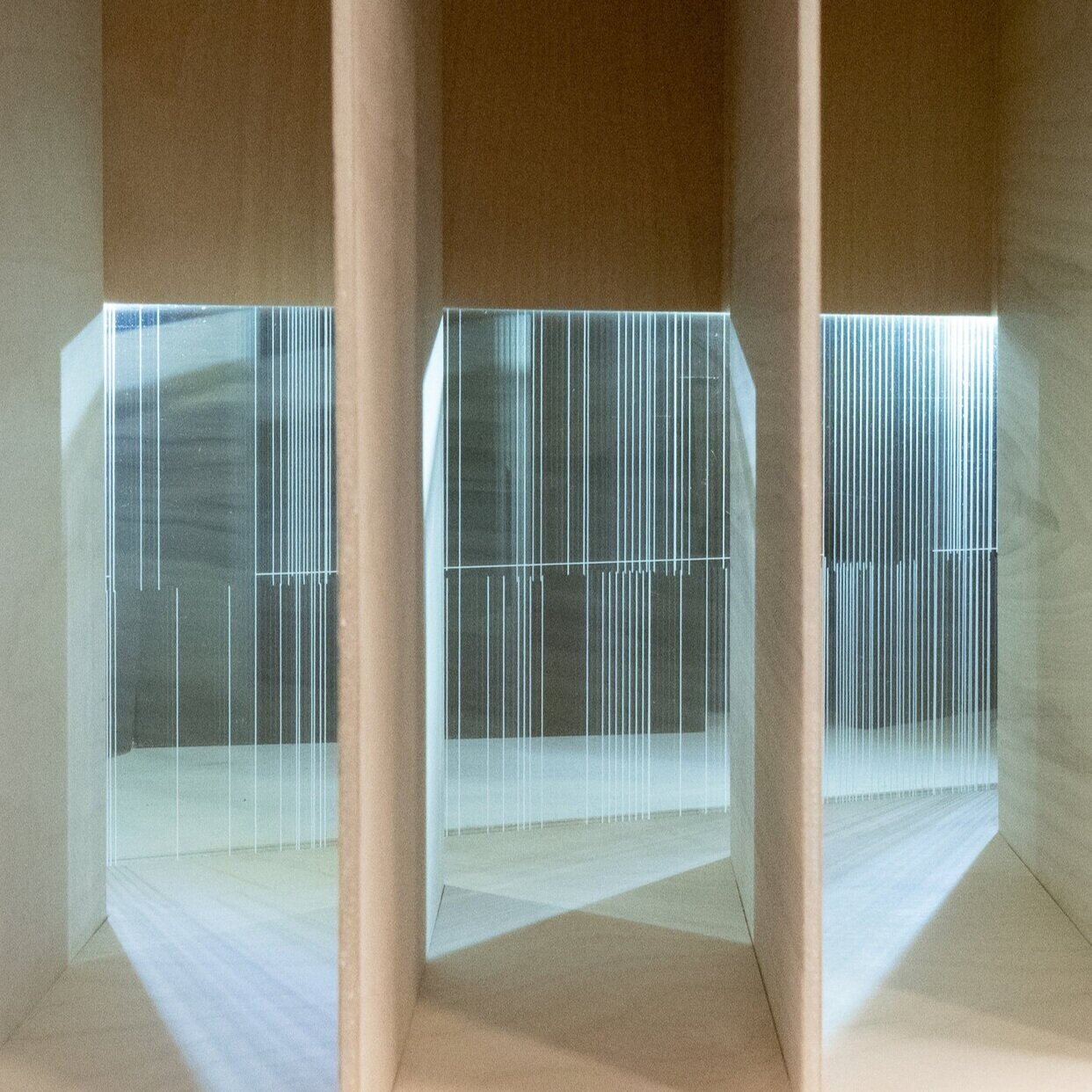“Walking is mapping with your feet. It helps you to piece a city together,
connecting up neighborhoods that might otherwise have remained discreet entities,
different planets bound to each other, sustained yet remote.”
”
619 S Wabash installation window
EXHIBITION: experiential urban adventure in the South Loop.
The Chicago Pattern Project occupied the storefronts at 33 E Ida B Wells Drive and
619 S Wabash Avenue
Video overview
This site specific project searched to rebuild environmental attachment, and focused on issues surrounding identity, movement and empirical experiences in the urban fabric. The resulting patterns were viewed superficially for visual pleasure (STOP), can be deciphered to gain access to actual information (SEE) and in its most involved form, can kindle a process of investigation of the viewers own spaces and experiences in order to connect them to their physical environment (REFLECT).
Chicago Pattern Project installations embraced the present, the mundane and the personal through drawing attention to the experiential as well as non-visible, data and history driven information. We created abstract patterns that are translations of our personal experiences of public spaces. These act as snapshots of complex subjective information. Through these patterns and the walks we invite you on, we aim to intrigue you to explore, we encourage you to see and re-see existing moments of your own environments. The design of the installation viewing box is based on the walk between the two installation windows. The three patterns inside are also derived from this small stretch of the city.
The Ida B Wells Drive site contained a “zoo” of ideas. A series of investigations how to translate experiential data into objects (see tab). The 619 S Wabash site had one of these “animals” full scale. The design of the object responded to the walk in between the two locations in its form, design, and the three patterns it contained.
This installation window takes one of these possible ways of visually displaying data and presents it at full scale. The design of the entire viewing box is based on the walk between the two installation windows. The three patterns inside are also derived from this small stretch of the city.
The first pattern captures data about different experiences related to time - how the walk maps during and outside of the academic year, different times of day and how it is altered by personal encounters. The second pattern reflects on factual data about building volumes, age of buildings, and erasures in this segment of the city. The final pattern is formed by recording sensual experiences in this segment such as smells, sounds, obstacles in the road, visual stimulation and encounters with traffic. SNEAKY SIDE NOTE: During the observation of these patterns in the viewing box viewers were encouraged to stop, learn and investigate. While lingering for a while outside the window exhibition goers became a positive part of the city’s fabric- making the street more interesting and safe.
Photo credit: Meimei Yu, Chris Baude, Petra Probstner



